
Salty Sam’s Fun Blog for Children
Number 248
Coffee
Hello Everyone

Auntie Alice is a very busy lady as you have probably gathered.
She is out and about a lot and if she is at home, her cottage is very often bustling with activity.
Every month, she hosts a coffee morning and her friends come round to have a chat about everything that is going on in town.
A lot of organizing of town events goes on at one of Auntie Alice’s coffee mornings; and no doubt a lot of gossiping as well. Everyone knows everyone else’s business in Rocky Bay!
Drinking coffee is very fashionable at the moment and every town seems to have at least one coffee shop where people meet up with their friends or workmates or maybe just sit and read for a while. They also have Wi-Fi which means that people can sit and work or contact far-away friends and relatives.
Did you know that coffee is made from beans and they come from a plant?
Of course, Auntie Alice doesn’t grow coffee in her garden. Coffee plants are grown in much hotter countries. She has to buy her coffee from the supermarket.
You might not be allowed to drink coffee, it is quite a grown-up kind of drink, but you have probably tasted coffee-flavoured chocolates.
Coffee is grown in many countries but originally came from the ancient coffee forests in Ethiopia. There, they say, a goat herder called Kaldi, who lived in a place called Caffa, first discovered how these beans could be used.
The story is, that he watched how when his goats nibbled the berries off a certain tree they became very energetic; so much so that they didn’t even want to go to sleep when night came.
So Kaldi tried eating some of the berries himself and discovered he was in a caffeine frenzy.
Kaldi told the abbot of the local monastery who then made a drink from the berries. The drink helped him to keep wide awake through the long hours of evening prayer. The other monks then tried the drink and the word spread beyond the monastery and to the Arabian Peninsula.
Here, the coffee trees were cultivated in plantations so that coffee could be drunk by the wider population. By the 1500s, coffee was being grown as far as Egypt and Turkey.
Coffee was being enjoyed in homes and public coffee houses. People came to these coffee houses to chat, play chess, listen to music and watch performers.
The thousands of pilgrims that visited the holy city of Mecca discovered this energizing drink and so knowledge of it began to spread even further.
By the 16oos, coffee was being drunk all over Europe. Some people were suspicious of the new drink, maybe they thought it had magical properties because it had such a significant affect on the way people felt when they drank it. At that time, when the people thought something was bad they would associate it with the Devil. But when the Pope tried it, he was so impressed, he gave it his approval.
But in any case, coffee houses were becoming popular all over Northern Europe. ln Holland, France, Austria and Germany people would gather in coffee houses to meet up with their friends.
ln England, the price of a cup of coffee was one penny and because in a coffee house you could join in with interesting conversations and learn things from other people they were dubbed ‘penny universities’.
There were over 300 coffee houses in London alone.
They were frequented by artists, writers, businessmen and merchants.
Meeting with other people could help you develop a business. Probably the most famous insurance company in the world, Lloyds of London, was started in Edward Lloyd’s Coffee House.
Coffee began to be used as the common breakfast drink instead of wine and beer. People noticed that they were more able to work after drinking a cup of stimulating coffee rather than an intoxicating alcoholic drink (made them drunk)!
Coffee was then taken to the New World (The Americas) where it eventually became more popular than tea. The sale of coffee became even greater when the American government banned the sale of alcohol in 1920.
With the fashion for drinking coffee really taking off, there was fierce competition to grow the coffee trees commercially outside Arabia. People knew there was a lot of money to be made.
The Dutch smuggled some coffee tree seedlings out of Arabia (despite the plantations being fiercely guarded) and tried planting them in lndia. The attempt failed but they had more luck in lndonesia.
ln 1714, the Mayor of Amsterdam gifted a young coffee tree to King Louis XlV of France who ordered it to be planted in the Royal Botanical Garden in Paris.
ln 1723, a young naval officer called Gabriel de Clieu managed to get a little seeding from the King’s plant. He decided to transport it by sea to Martinique which is an island in the Caribbean.
The ship endured terrible weather and pirate attack but the little tree not only made it through the journey but it is said that to have parented the spread of about 18 million coffee trees throughout the island over the next 50 years – and what is more, all the coffee trees throughout the Caribbean and South and Central America.
That is about 90% of the world’s coffee crop from a single tree!
One of the most famous coffee crops in the world is in Brazil. lt was started by one Francisco de Mello Palheta who was sent to get a coffee seeding from French Guiana. This country is just north of Brazil on the mainland of South America.
The French were not willing to help Francisco, but, because he was so handsome, the French Governor’s wife thought he was wonderful and gave him a big bouquet of flowers before he left. She had secreted some coffee seeds inside the present.
These seeds were to start what is a billion-dollar industry in Brazil today.
Colonists continued to transport coffee seedlings all over the world throughout the 1700s and plant them in tropical forests and on rugged hillsides. Some crops flourished and some failed. New nations were established on coffee economies and some people lost fortunes. By the end of the century, coffee became one of the most profitable export crops.
lnto the next century, coffee continued to be popular.
ln 1901, instant coffee was invented in Chicago by a chemist called Satori Kato.
Not long after that, a decaffeinated product was being sold.
Decaffeinated coffee was really discovered by accident when some beans imported into Germany were ruined by water and some researchers tried to make a drink out of what had been delivered. The water had leeched the caffeine out of the beans and so people could now have a drink that tasted like coffee without getting the buzz of the caffeine. A lot of people don’t like to drink caffeine.
American soldiers are issued instant Maxwell House coffee in their ration kits as they fought in World War ll.
And after World War ll, ltalian, Achilles Gaggia invented the espresso machine. He named the coffee the machine produced ‘Cappuccino’ because he thought the coffee it produced looked the same colour as the robes of the Cupuchin order of monks.
ln the 1950s and 1960s, coffee shops were the place for young people to hang out and meet with their friends. Juke boxes played the latest pop music and coffee was really trendy.
As time went on, these places were considered a bit old-fashioned.
But then the style of coffee shop we see today started to take off.
ln 1971, Starbucks opened its first store in Seattle’s Pike Place public market. But it wasn’t until the 1990s that the coffee shop became part of so many people’s life again. From 1995 to 2000, coffee consumption skyrocketed once more, rising by 700% – as so many workers wouldn’t turn up to work without a capped cup of coffee in their hand ready to get them started on their day.
Today, after crude oil, coffee is the most traded commodity in the world.
And it all started with a man watching his goats!
Well, that is my story for this week. l hope you enjoyed it.
l have to go because – would you believe it – l have just had an urgent call from Auntie Alice. Some of Farmer Jenkin’s goats have got into her garden and she needs some help chasing them out!
Naughty goats!
Bye bye everyone – don’t forget to subscribe to my blog!
lf you like my blog, please support it by telling all your friends and followers about it.
Thank you!
And see you again next Fun Friday!
Love and kisses
Salty Sam

www.christina-sinclair.com


Bill and Bob’s Joke of the Week![]()
![]()
Bob: Do you know what kind of coffee vampires like to drink the most?
Bill: No l don’t. Which kind of coffee do vampires like to drink the most?
Bob: De-coffin-ated!

Salty Sam © Christina Sinclair 2015
Unauthorized use and/or duplication of material from this blog without express and written permission from this blog’s author and owner is strictly prohibited.
Links may be used to www.christina-sinclair.com

Picture Gallery
 Coffee growing on a coffee tree
Coffee growing on a coffee tree
There are 2 coffee beans inside each cherry-like, red fruit
They are white and very sweet to eat
 A coffee tree growing in a greenhouse in England
A coffee tree growing in a greenhouse in England
 Dried coffee beans
Dried coffee beans
 Mecca
Mecca
 Lloyds of London started in a coffee house
Lloyds of London started in a coffee house
 Lloyds of London today
Lloyds of London today
 Louis XlV
Louis XlV
 Martinique
Martinique
 Capuchin monk
Capuchin monk
 A juke box
A juke box


 THE SALTY SAM NEWS DESK
THE SALTY SAM NEWS DESK

This week Auntie Alice announced that she thought that the children were eating far too many crisps and she was going to try and find some healthier alternatives for them to eat.

So last Saturday afternoon she had all four of them in the kitchen ready to do some cooking.
She put the oven on to heat it up ready.
The children washed their hands and put on aprons.
She told the children that she had a few things to try and they could see which they liked the best.
She had some vegetables washed and prepared and then set to work to slice them up using a mandolin.
As she created the piles the children laid them out onto sheets of parchment that she had put on top of baking trays.
So they tried baking parsnips, sweet potatoes, beetroot, courgettes and something called taro.
They also tried roasting some pumpkin and sunflower seeds and some nuts.
Then they made some salsa and hummus for dipping their home-made crisps into.
And finally they spent the rest of the afternoon taste-testing while Auntie Alice sat down with a cup of tea and put her feet up.

If your doll would like to spend an afternoon baking, she would love to have these slippers to wear – and an apron to keep her dress clean.
NEWSDESK MINIMAKE
12” DOLL SLIPPERS AND APRON
SUMMER SLIPPERS (KNIT TWO)
Using 4mm knitting needles and pink dk yarn cast on 7 stitches
Knit 2 rows of garter stitch
Knit 6 rows of stocking stitch
Knit 2 rows of garter stitch
Cast off leaving a length of yarn for sewing up
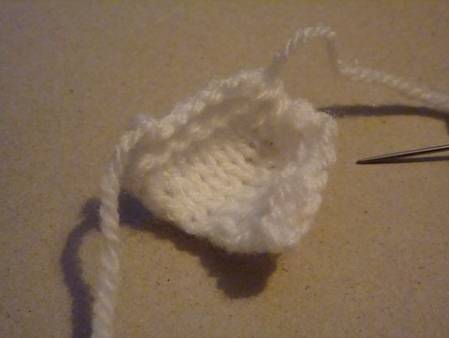
TO MAKE UP
- Take the end of the yarn you have just cut and weave it up the side of the knitting using a knitter’s needle
- Pull the knitting in to create a pointed toe of the slipper
- Secure the yarn and sew along the top of the slipper with wrong sides together – leave a 1cm gap at the back end
- Sew up the back seam of the slipper using the length of yarn left over when casting on
- Neaten the ends of yarn and turn the slipper right sides out
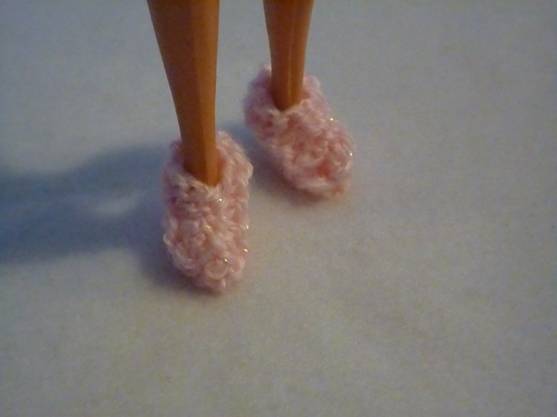
WINTER SLIPPERS (KNIT TWO)
Using 4mm knitting needles and white dk yarn cast on 7 stitches
Knit 2 rows of garter stitch
Knit 8 rows of stocking stitch
Knit 2 rows of garter stitch
Cast off leaving a length of yarn for sewing up
TO MAKE UP
- Take the end of the yarn you have just cut and weave it up the side of the knitting using a knitter’s needle
- Pull the knitting in to create a pointed toe of the slipper
- Secure the yarn and sew along the top of the slipper with wrong sides together – leave a 1cm gap at the back end
- Sew up the back seam of the slipper using the length of yarn left over when casting on
- Neaten the ends of yarn and turn the slipper right sides out
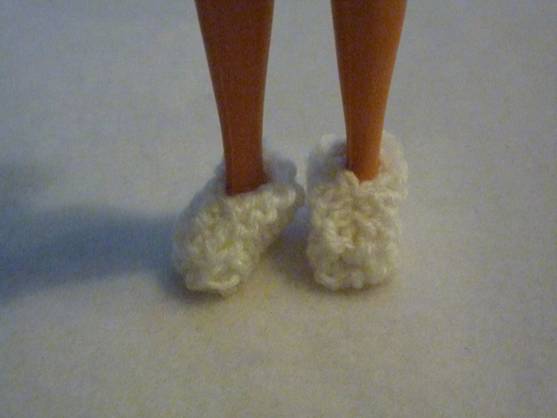
APRON (KNIT ONE)
Using 4mm knitting needles and white dk yarn cast on 10 stitches
Knit 40 rows of garter stitch
Cast off
TO MAKE UP
- Crochet 18 chains into a length of white yarn and tie the ends to each side of the top of the apron
- Neaten the ends of the yarn using a knitter’s needle
- Crochet 40 chains into a length of white yarn twice
- Tie one end to the side of the apron at waist level and neaten both ends of the cord you have made
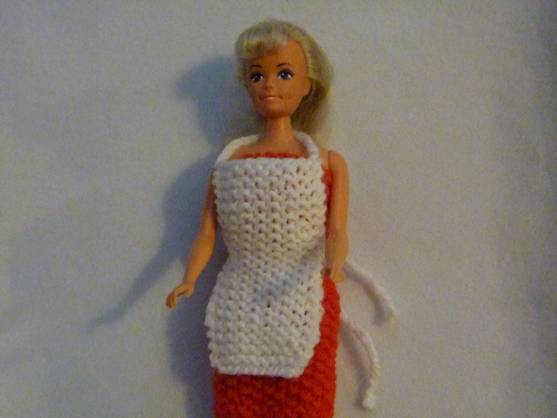

*********************
TO ADVERTISE ON THIS BLOG
PLEASE CONTACT:
christina.sinclair.ads@aol.co.uk
*********************


Quick Quiz
And here is another column word puzzle for you to do.
Draw a column of boxes – it should be four boxes across and ten boxes down.
Answer the questions and put one letter in each box.
Read down the first column that is something nice to have with tea or coffee.
- what a superhero might wear
- something a train would ride on
- opposite to difficult
- the Latin name for a maple
- where flour is made
- the opposite to anxious
- a straight line around which the Earth spins
- the opposite to cruel
- the first name of a popular children’s writer
- to cut a little cut with scissors




lt’s the Weekend!
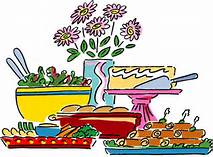
HOW TO MAKE A STRlPED HAT
This hat looks very Christmassy so if you want it to be ready for the season, you had better get knitting now!
ADULT’S STRIPED HAT (KNIT TWO)
Using 4mm knitting needles and red dk yarn cast on 62 stitches
Slip 1 (k3, p3) repeat these last 6 stitches until the last stitch, p1
Repeat this row 29 times (30 rows)
Continue in the 3×3 rib pattern for 10 rows
Decrease 1 stitch at each end of
the 1st and 10th row (40 rows)
Continue in the 3×3 rib pattern for 10 rows
Decrease 1 stitch at each end of
the 10th row (56 stitches and 50 rows)
Continue in the 3×3 rib pattern for 26 rows
Cut the yarn off with about 70cm left to pull through the remaining stitches and secure
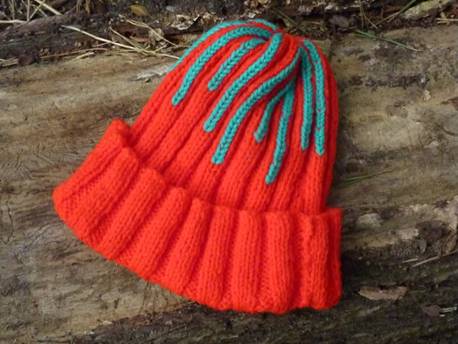
CHILD’S STRIPED HAT (KNIT TWO)
Using 4mm knitting needles and red dk yarn cast on 56 stitches
Slip 1 (k3, p3) repeat these last 6 stitches until the last stitch, p1
Repeat this row 25 times (26 rows)
Continue in the 3×3 rib pattern for 10 rows
Decrease 1 stitch at each end of
the 1st and 10th row (36 rows)
Continue in the 3×3 rib pattern for 10 rows
Decrease 1 stitch at each end of
the 10th row (50 stitches and 46 rows)
Continue in the 3×3 rib pattern for 20 rows
Cut the yarn off with about 70cm left to pull through the remaining stitches (decorate the hat before you pull your hat up tightly at the top and secure your yarn)
TO MAKE UP
- Swiss darn some stripes up the centre of the ridges in random lengths using green yarn
- Pull the hat up tightly at the top
- Sew up sides of hat with the right sides of the knitting together
- You can decorate with a bobble or some plastic holly if you like – if you use brown and cream yarn, you hat will look like a Christmas pudding!

Please note that the material on this blog is for personal use and for use in classrooms only.
It is a copyright infringement and, therefore, illegal under international law to sell items made with these patterns.
Use of the toys and projects is at your own risk.
©Christina Sinclair Designs 2015

A barista is a person who makes coffee in a coffee shop – when you say this word, the stress is on the ‘i’ so that it doesn’t sound like barrister who is a person who works in a court of law.
Mouse tail is barista slang for the perfect extraction of an expresso coffee.




Quick Quiz Answers
- CAPE
- RAlL
- EASY
- ACER
- MlLL
- CALM
- AXlS
- KlND
- ENlD
- SNlP
CREAM CAKES!




Great information. Lucky me I recently found your website by chance (stumbleupon). I’ve bookmarked it for later!
Thank you so much for your comment Judi!